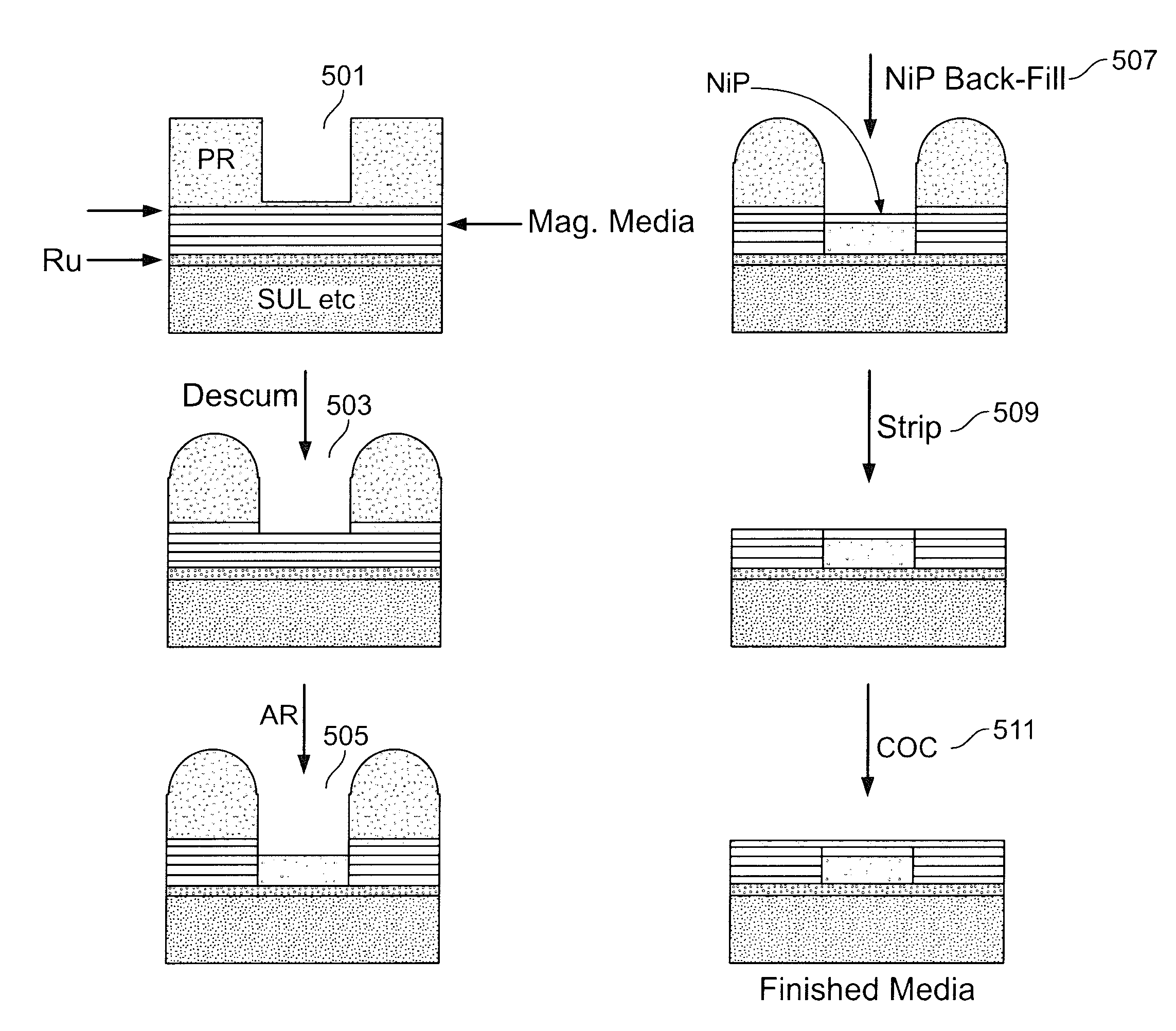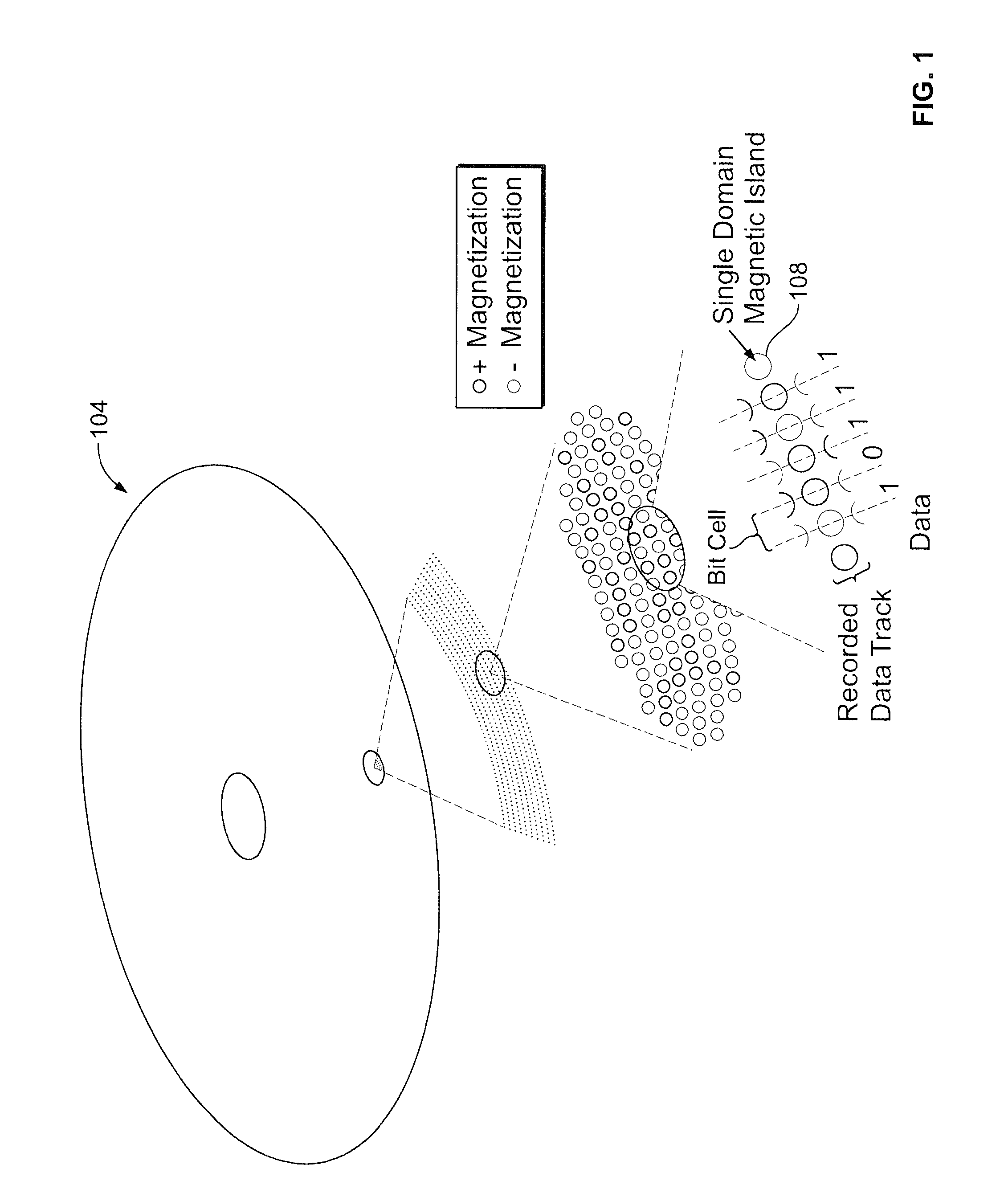Formation of patterned media by selective anodic removal followed by targeted trench backfill
a technology of selective anodic removal and trench backfill, which is applied in the field of formation of patterned media or discrete track media, can solve the problems of not being very selective in defining, not always achieving consistently higher bit densities, and complicated manufacturing methods of bpm and dtr
- Summary
- Abstract
- Description
- Claims
- Application Information
AI Technical Summary
Benefits of technology
Problems solved by technology
Method used
Image
Examples
Embodiment Construction
[0018]A method for forming patterned media is disclosed herein. The patterned medium is formed by selective anodic oxidation of a cobalt-containing magnetic film layer on the medium substrate, then depositing or backfilling a non-magnetic matrix in the regions of the cobalt-containing magnetic film layer where cobalt was removed. By way of example, FIG. 1 depicts an exemplary storage medium 104 comprising an array of magnetic dots 108 in a magnetic film layer. Each magnetic dot 108 is capable of storing a single bit of information. A typical magnetic film layer may be comprised of cobalt (Co) and platinum (Pt).
[0019]FIG. 2 is a flowchart illustrating the steps of an exemplary oxidation-reduction method in which the removal of cobalt from the media substrate and backfilled with a non-magnetic matrix in a single electrochemical cell, or “one-pot” method. As will be explained further below, the progress of the reaction may be attenuated by lowering the current applied to the single ele...
PUM
| Property | Measurement | Unit |
|---|---|---|
| Electric potential / voltage | aaaaa | aaaaa |
| Nanoscale particle size | aaaaa | aaaaa |
| Magnetism | aaaaa | aaaaa |
Abstract
Description
Claims
Application Information
 Login to view more
Login to view more - R&D Engineer
- R&D Manager
- IP Professional
- Industry Leading Data Capabilities
- Powerful AI technology
- Patent DNA Extraction
Browse by: Latest US Patents, China's latest patents, Technical Efficacy Thesaurus, Application Domain, Technology Topic.
© 2024 PatSnap. All rights reserved.Legal|Privacy policy|Modern Slavery Act Transparency Statement|Sitemap



